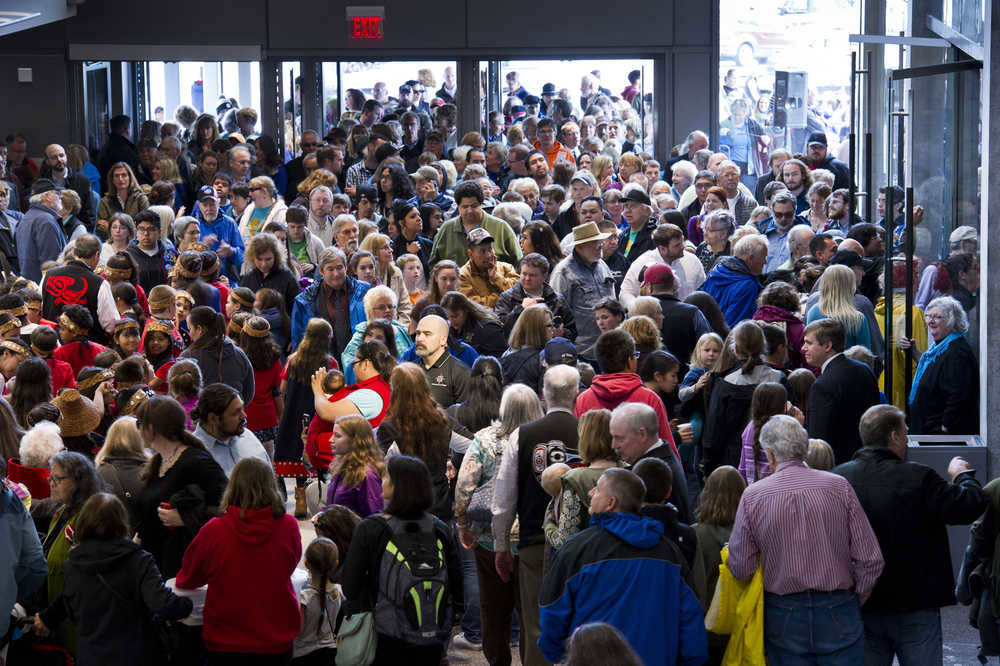Alaska’s population fell by about 2,700 people in 2017. It’s not nearly as noticeable as the post-pipeline-construction crash in 1977 or the 1980s recession, but there is a story here. To best understand what is going on today, we need to look at how the past created the present.
The population of working-age adults ramped up quickly in the 1970s and early ‘80s as workers moved to Alaska to participate in the oil boom. That boom ended in 1986, and many workers migrated the other direction.
The outflow of people stabilized in 1990. Since then, the growth in the labor force has not been due to workers moving to Alaska. Rather, it is a consequence of the population that was attracted in the decades before. The oil boom brought people in their 20s and 30s to the state. That is the prime age for having children.
Since the oil boom did not attract a lot of people in their 50s and 60s, there was not a lot of workers entering retirement age in the 1990s. As the children born in the ‘70s entered the labor force from below, there were not retirees falling off the other end. Hence, the labor force grew.
By 2010, those people that were in their 30s when they moved to Alaska were now in their 60s. Since retirees are more prone to relocate and to pass on, population growth was put in check. Since then, the number of new adults and the number of new retirees has evened out. So, the labor force stopped growing.
But the increasing population of retirees has been masking a larger problem for at least five years. Since 2012, the combination of increasing retirements and outward migration of working-age adults has led to a decrease in the labor pool.
We finally noticed the population decrease in 2017 because fewer children were born, and because the natural consequence of an aging population is an increased mortality rate. But the strong economy in the Lower 48 started attracting our workforce well before the recession hit in 2015. In other words, this isn’t a repeat of the 1980s recession. It’s a fundamental change in the underlying reality of our population base.
In 1980, the share of retirement-age people was just 2 percent. In 2018, it is now over 11 percent. By 2022, 16 percent of Alaskans will be over the age of 65. And in 10 years, the retirement age population will have doubled from current levels and will make up nearly 20 percent of all Alaskans. From there, I expect things to level off.
This trend was beneficial during the recent recession. Retirees left the workforce, allowing it to decline without significant layoffs. And their savings acted as a cushion, allowing housing prices to stay put and demand for goods and services to be maintained.
But what if the oil price crash was just a convenient story the explain away a deeper problem? What if the combination of better opportunities in the Lower 48 for our working-age population and an increasing number of retirees is signaling a systemic problem in our economy?
In theory, the aging population should create an opportunity for economic growth. Retirees will continue to consume products, creating new injections of cash from their retirement accounts and pension plans. We will need workers to provide these goods and services along with more nurses and doctors to meet their healthcare needs.
At the same time, the oil and mining sectors appear poised to need more workers to develop new resources. Yet, the labor force looks like it will continue shrinking over the next 10 years as more people retire than new participants enter.
There are a few ways this plays out. In one scenario, the workers we need are attracted to Alaska and the population grows to meet the economy’s needs. Of course, Alaska needs to offer what workers want. In another scenario, technology fills the labor gap and the economy grows without population growth. Some hybrid of these two scenarios is the most likely outcome.
In the worst-case scenario, when people can’t access the goods and services they need, they move to somewhere they can. This could create a vicious circle where the money flows out and the workers follow the money.
The problems of tomorrow are already evident today. The question is whether we will steer the ship or rearrange the deck chairs.
• Ed King is the principal economist of King Economics Group. He lives in Juneau. My Turns and Letters to the Editor represent the view of the author, not the view of the Juneau Empire.

